
In today’s evolving business world, keeping up with the trends, market competition, and prosperity evolution has become mandatory for businesses to thrive. However, the task is daunting at the same time.
Why lead change management for executives?
Change is mandatory to evolve and grow. At the same time, organizational change demands testing new strategies for success, which is why people are always afraid to change. You must adopt a strategic change management process to handle the transformation successfully by perceiving the future beforehand and proceeding accordingly.
This blog includes some of the best recommendations for the senior executive team like top managers regarding organizational change.
Let’s start.
Practical change management recommendations for executives
If you are an executive responsible for handling organizational change, the below-provided technical points are perfect for you regarding corporate change management.
- Meet and discuss with all business executives
Agreement and multiple points of view from all business executives are necessary to have a diverse thought process before initiating the change. Multiple thoughtful discussion sessions with the executives and top managers will allow you to dive deeper into the technical details. Moreover, various opinions from experienced stakeholders enable you to foresee a broader picture.

Among the hardships of organizational change management, problems like disagreements and employee dissatisfaction arise when there is poor communication.
Consider an example of asking four different business executives about what factors affect the business evolution and transformation. You may get four separate statements in their replies. It is because each executive thinks from their perspective about the elements that disturb or assist their workspace.
Although it may seem a negative point that none of the executives agree, such practices open topics and challenges in much detail in a broad picture. The different opinions and priorities proposed by various executives allow tackling multiple challenges simultaneously.
On top of that, the broader the discussion, the wider you’ll get insights into the resources that may or may not assist the change. Henceforth, meetings with executives and stakeholders and constant communication are great suggestions for top managers. Don’t forget to explain the details mentioned above behind the necessity of these discussions.
- Focus on hard and soft fundamentals
Before starting with the necessities of both these hard and soft business fundamentals, let us explain what these fundamentals genuinely are.
Soft business factors are transformational leadership, motivation, workplace culture, vision, employee relations, and other environmental terms. However, complex fundamentals are time, project management, and finances. These are the factors that significantly impact the change.
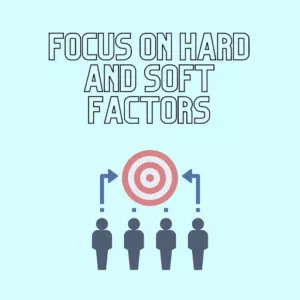
Recently, change experts have paid more attention to soft factors like motivating the employees and maintaining the company culture. These factors are undoubtedly important; however, these don’t have as much an impact as these gurus perceive them. Let’s say that leadership and creative mentorship are mandatory to transform correctly; however, it is not always the case.
Ethics, a company’s culture, and other soft factors are deeply ingrained in the habits that it is tough to change the behavior and attitude than to make the actual anticipated change. Moreover, such elements do not provide the mandatory core data to analyze the crucial metrics. That’s where the importance of hard factors arises.
Hard business factors bear such distinct characteristics and data traits that, when paid proper attention to, can bring the desired change.
One of the main reasons to prefer hard factors over soft factors is that hard factors are measurable, easily transferable, and quickly influenceable. Let’s say the time. Time is much easier to calculate and much more accessible for managers to make their teams more time-dependent than to change their ingrown habits and lifelong ethics.
A change can be fatal if the top managers pay the necessary attention to the hard factors. It doesn’t mean neglecting the soft aspects. However, assigning a proper 70:30 importance ratio would make achieving the desired change more manageable. This practice also enables you to develop practical change management models that assist the organizational change, engage employees, and help in the culture transformation at the same time.
- Accept time consumption
Organizations often assume that the more time a project takes, the more likely change initiatives fail. However, this is not true at all. In general, often those projects succeed that follow a detailed time plan and take enough time to observe the results and implement the change accordingly. As per that phrase, you cannot achieve success overnight; you can easily understand the gist behind comprehending the time consumption.
The more the time you take to implement the change, the better details you can extract, and the more you can review the progress often.
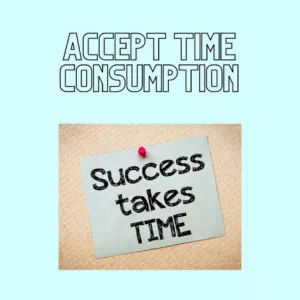
To successfully manage change, start by designing short milestones for each quarter of the month and then review the progress and assess the impact of the change. Moreover, a broad time span allows you to spot the gaps, challenges, and risks associated with change.
Moreover, designing milestones allows you to view the progress more clearly, enabling the corporate change management team to draft more detailed progress reports. Also, it allows us to monitor progress and notice the changes a milestone has brought into the organization. Thus, a broader span allows better assessment and analysis of the targets.
- Maintain performance integrity
Performance integrity is a strength by which an enterprise can rely upon its team of executives, top managers, and workers to implement the revolution successfully. The team leads and top managers know their employees who perform the best. Hence, making sure that they are also human beings and are not burdened with piles of tasks may hinder their productivity and performance.
On the other hand, employees in those organizations that successfully implement the change, effectively manage change, and revolutionize their structures make sure they go above and beyond and go the extra mile to get the desired work done.
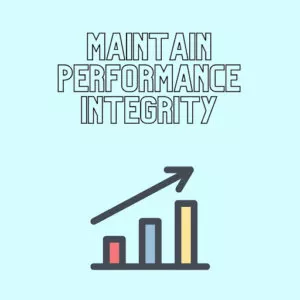
To ensure the extra work is accomplished in the provided time frame and the super-star employees are not frustrated, come up with employee compensation benefits and rewards to boost their morale and target the desired change goal through performance improvement.
Moreover, engage employees through multiple training programs to familiarize them with the technical change processes. Also, top managers must make employees understand the business model and the transformational change it will bear in the coming time.
Sometimes separately interviewing the employees to judge their change management skills and allocating their few days from their routine to work for the change also assists in finding the right and talented employees throughout the organization.
On top of that, top managers should work on publicizing the parameters on which they will make the evaluations for employees’ efforts and change progress. Hence, it is one of the best organizational change management practices that relieve the employees and target the desired change management objectives.
- Analyze the workloads
When an organization launches a change initiative, one of the main mistakes for top managers is not recognizing the employee workloads and the duties they are already assigned.
Hence, before implementing the change, you must calculate the employee workloads by estimating their existing and new responsibilities. However, in an ideal situation, the workload should not exceed more than 10%.

Otherwise, by not considering the workloads and overburdening the employees, it is possible the employees’ morale and productive abilities will fall apart, conflicts may arise, and the change initiatives will ultimately start troubling.
Thus, to avoid such situations, organizations must take proper measures regarding the responsibilities of employees and change management teams by lifting some already existing burdens to make space for them to work on the change initiatives.
In the end, keep in mind that delaying the essential tasks and lifting the work burden sometimes becomes more time-consuming and costly at the same time.
- Identify the factors that ease and hinder the change
Before developing a change strategy and framework, do proper measures to identify the critical success factors that assist the change management. Not just the positive aspects, but also try to research and find the factors that hinder the change.
Making a timeline of the expected positive and negative outcomes, developing strategies to embrace change, and fighting the negative and positive circumstances should also be adapted when implementing major change initiatives.
Such practices allow you to visualize the change with detailed analytics and metrics in a broader perspective.
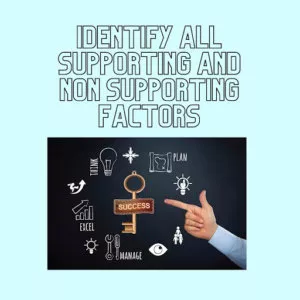
Moreover, keep in mind that no matter how well you have prepared to implement the change and how successful you perceive it beforehand, there will be specific unexpected roadblocks and challenges. Thus, make room to fight these unwanted challenges and be prepared to tackle all the hurdles to the status quo courageously.
Hence, preparing beforehand and training the workforce to deal with such factors that hinder the pavement to success is a mandatory step you, as a top manager, should adapt.
- Analyze the conflicts
As a change strategy and framework are implemented, there will be inevitable conflicts that will arise within the workspace. It is good to identify and analyze those conflicts and the reasons that initiate such issues in the workspace.

Employees of those organizations which are implementing real-time business strategies are prone to fear, uncertainties, and conflicts. In such situations, employees generally take out their frustrations on their work responsibilities or towards other employees due to inconvenience caused during the change implementation process. Hence, it is the responsibility of the junior and top managers to oversee such issues and ensure a healthier workspace.
A top manager that’s sharp and active will always dive deeper into tackling such conflicts with no negative results so that they do not disturb the organizational change management.
- Updating the workforce on major organizational changes
When implementing the change, top managers must inform all employees under their supervision regarding the changes. This way, the employees will mentally become aware and ready to adapt to the changes.
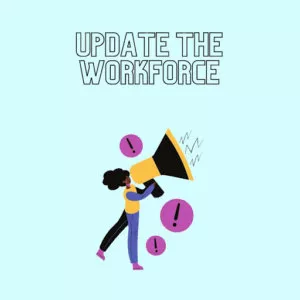
Updating the employees through one on one conversations and keeping them informed about what’s going on in business results for expected outcomes and better targeting of the transformation goals.
One of the key components of effective change implementation is that senior leaders should communicate the change strategies to adapt, and practices to be aware of in the implementation. M
Moreover, updating the employees about the organization’s culture, and new government regulations is also mandatory for employee acceptance and employee engagement. Corporate leaders must communicate successful change efforts for the rapid growth and productivity of the change management process.
- Handle hesitate
People prefer to stay in their comfort zones; thus, you may face resistance and opposition from some employees throughout the organization. Such situations are expected, and all talented top managers should perceive such reactions.
However, the major obstacle and challenge are to handle employee resistance positively. Employee resistance generally arises due to emotions and frustrations. To avoid any negative impact, the top leaders should do pre-hand work on removing such behavioral barriers that restrict a change.

Moreover, addressing the employees on their psychological level is also mandatory to avoid any such resistance movements that might arise from employees as an aftereffect of this change.
This point also raises points on the importance of effective communication between the employees. With practical communication skills, a top manager can easily handle such employee resistance and make them turn in favor of the change process.
- Involve all layers
Most organizations often forget to consider that middle-level and frontline workers are the most impactful ones when it comes to either making or breaking a norm. The same is the case with change management.
Business transformation becomes more effortless and seamless when people are tapped with pertinent information and instructions from all layers. Informing them beforehand of the issues they might face temporarily is also crucial.

The frontline workers are those workers who have the most sound knowledge of logical and technical processes and potential customer experience issues. Their engagement can make even the most complex organizational change initiatives easier if communicated and involved correctly. And if not involved and appropriately displayed, their resistance might become a daunting challenge for top managers.
The change management team, who ignores the equal participation of all workers layers, often believes that the fewer the people involved, the better the results will be. However, it is a terrible practice. Undoubtedly, more involvement of employees will take a longer time to implement the change. But, this is the only way to ensure maximum engagement and participation from employees of all levels. Such practices make the transition more realistic, practical, and result-driven.
- Document the process and make it accessible for everyone
One central aspect of delivering complete information to the business workforce is documenting the whole process and making it accessible for all employees.

Employees spend most of their time researching for information, so documentation makes it easier to explore any mandatory information they need regarding the change management process.
Documentation is also necessary to maintain organizational change management records. It also opens ways for employees to propose a new strategy that they feel might be good for business. Moreover, documentation of change management strategies also assists the change project management teams to communicate regularly with employees in training sessions in a timely manner.
In addition, doing proper documentation to store the information and making it easily accessible for everyone makes the change process a lot easier and much more result-driven.
- Draft the evolution’s framework
No one is born with the skills and expertise to manage change. Change management is a change process and a skill that one can only master with time. Thus, based on employees’ capabilities, focus groups, and change managers, draft the final structure and roadmap of the change you’re looking to implement in your enterprise.
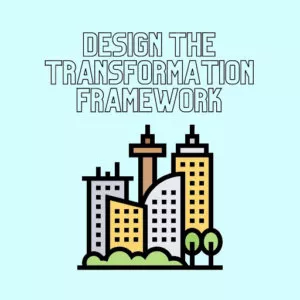
With the above-mentioned detailed recommendations and suggestions, you get insights into factors you must consider when outlining the framework.
Developing an infrastructure beforehand allows the organization’s executives and key stakeholders to judge their transformation capabilities. Moreover, you are preparing the final draft, and you will get a roadmap on the mediation that inclines the chances of successful change management that complies with organizational structure.
Change management recommendations: Final thoughts
Above, we have provided a detailed guide on practical recommendations, for managing organizational change, dedicated to top managers.
To ensure the change is smooth and more manageable, develop employee recognition, compensation, and award schemes. Employees work more effectively when they are rewarded and benefit from additional compensation. Hence, do not forget the emotional side of change management like introducing reward systems for employees to target the expected results.
If you’re looking to implement a smooth transition, don’t forget to avail this benefit by reading this executive buy-in for effective change management to understand the organizational change management process in detail.
Now that you’re all informed of the practical change management recommendations, check out this change management plan and strategies to start the change process right away.
WalkMe Team
WalkMe spearheaded the Digital Adoption Platform (DAP) for associations to use the maximum capacity of their advanced resources. Utilizing man-made consciousness, AI, and context-oriented direction, WalkMe adds a powerful UI layer to raise the computerized proficiency, everything being equal.



